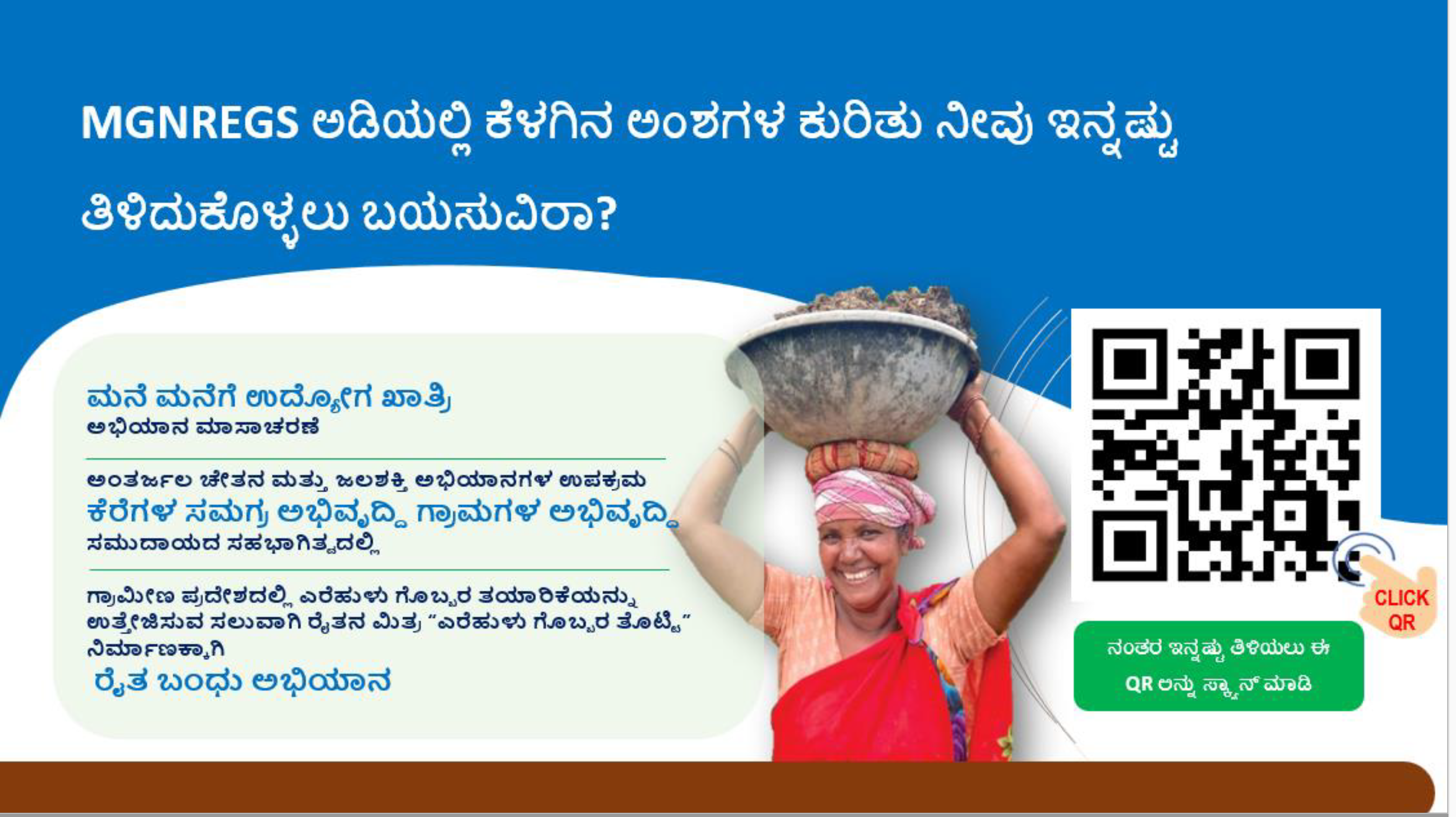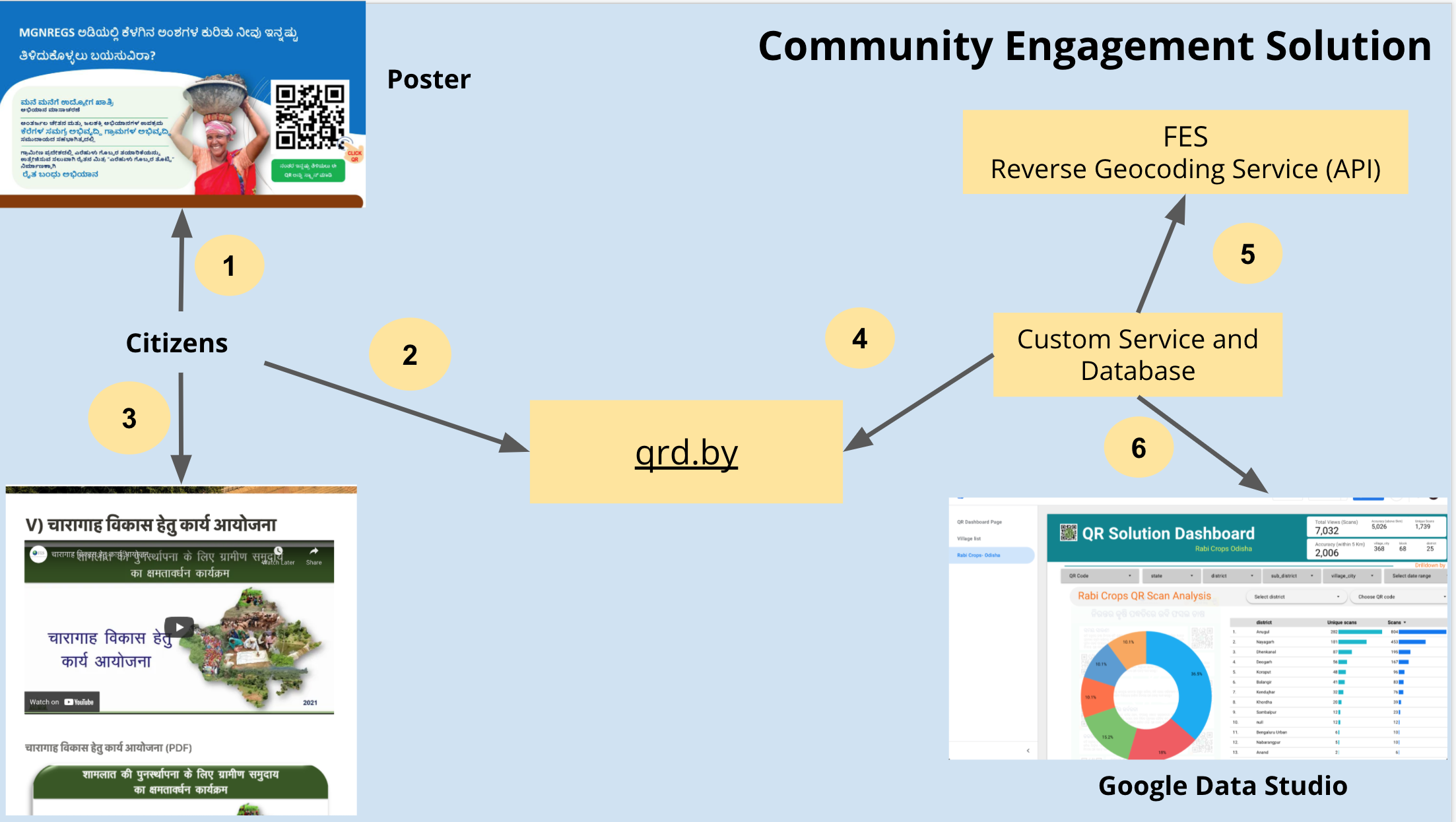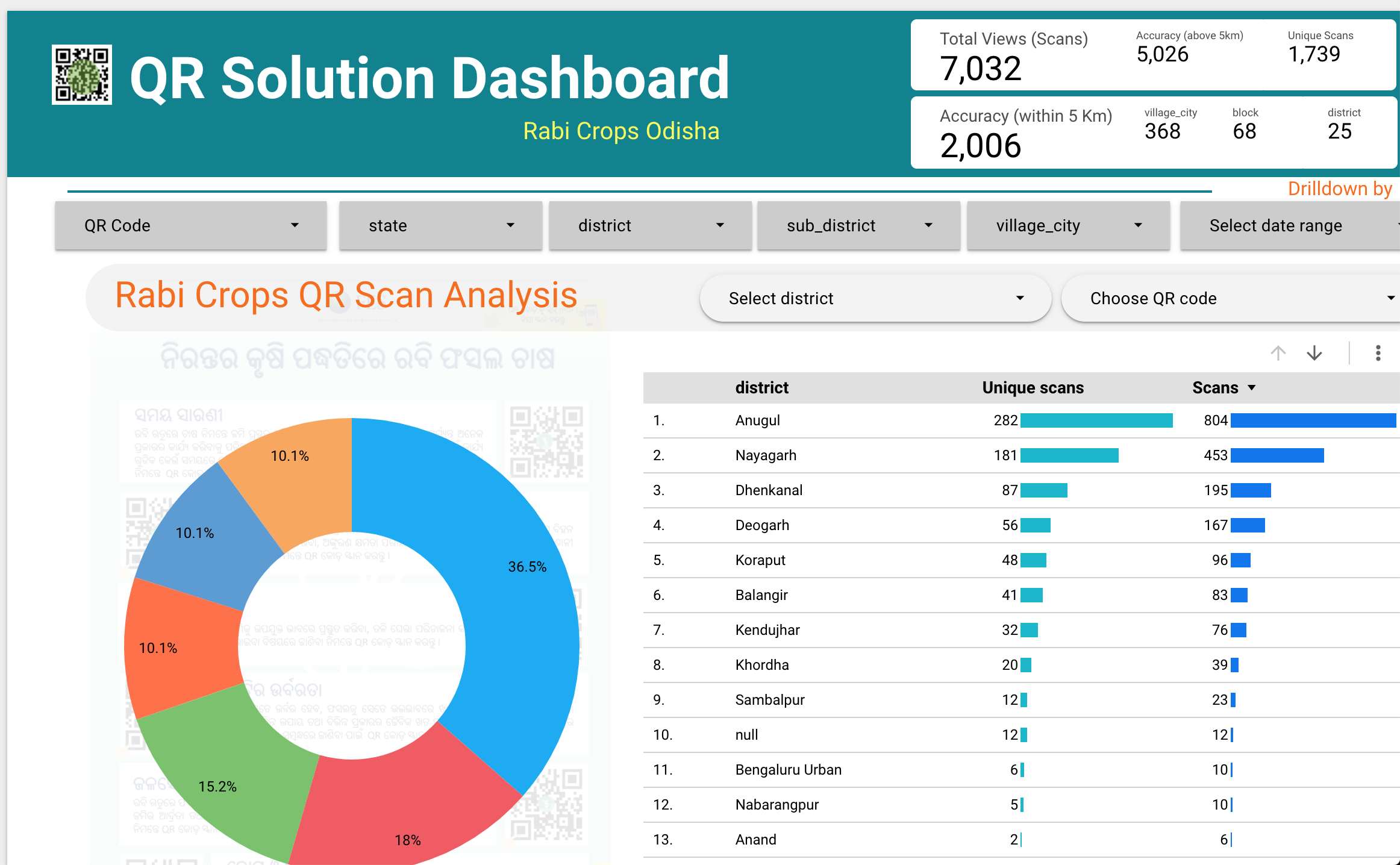The social programs in the domain of environment, water (like others) eventually aim to improve the lives of the communities in which they work. These programs aim to achieve this by working with governments and nonprofit providers. The last mile of the main stakeholders which is community members (or citizens) is difficult to bring into the intervention - as it increases the scale of effort required by a few orders of magnitude. This has been a challenge. The community engagement project described here is trying a simple technology-based idea to make a small headway in this direction. We have developed the solution but the idea itself came from the work of Arghyam and Vrutti. In the article, we try to explain the idea.
Context
Let's say as a social organization wants to improve the condition in villages in the following areas:
- Creating pasture for farm animals
- Pest and disease management in farms
- Water, soil moisture, soil nutrients management
...and other such topics of concern. While one may have some knowledge and beliefs about what a particular community's needs are - how does one find out what the community's top needs are and hence what to focus on and improve upon. Secondly, how do organizations reach more and more people about spreading awareness on these topics? For organizational activities related to information dissemination at scale, this is a challenge.
Idea
The idea being tried out is towards this is as follows.
- Create QR codes where each code links to a piece of web content (video, pdf in local language about a topic). One such sample content can be seen here.
- These QR codes are distributed at the village level via posters, WA messages. The posters are put up at prominent places in the villages like the gram panchayat office, Anganwadi center.
- When people scan these QR codes the link takes the user to a website that asks the user to share their location. Irrespective of whether they share location or not they are taken to the content. If they share their location then it gets recorded too. No other details are asked for.
- If people find content relevant they would spread it themselves (instead of organizational effort alone to scale).

One of the posters used in Karnataka
This creates the 3 major data points for each scan - which QR is scanned, when, and from where. This data (as explained in the technical section) allows for, people who created these QR codes, to understand the interest level in topics by village/block/district and over time. Based on this data community-based organizations can further engage with the communities on the topics of communities' interest - for better outcomes.
Technical Implementation
- The diagram below explains how the system works. qrd.by is a service (QRD) where one can design the QR code containing a hyperlink to the content which should be provided to the user upon scanning.
- Once the user scans the QR code the user is first redirected to QRD. The QRD stores the location (if provided by accepting a pop-up message), DateTime, anonymized IP, a few other device details. The user is immediately redirected to the educational content.
- Then (on a regular basis) the community engagement solution developed for this project, downloads this data from QRD.
- The service uses then uses reverse geocoding service API provided by FES to resolve latitude/longitude data from QRD into the village, panchayat, block, district, and state information.
- The service provides a dashboard (using Google Data Studio) based on all the data for organizations who created the QR codes and content, to understand the nature of engagement from the communities. This is achieved by securely exposing the PostgreSQL database to Google Data Studio.

Conceptual Data Flow

Screenshot of dashboard
Conclusion and Possibilities
It is important to mention that, the content to which the QR codes link can be continuously be improved upon based on feedback and changing times - with no on-ground work required.
The project is currently rolled out by FES in Rajashthan, Odhisha, and Karnataka. If you have similar requirements please get in touch with us, FES, Arghyam, or Vrutti.
Author: Vivek Singh
Published On: 23-Mar-2022